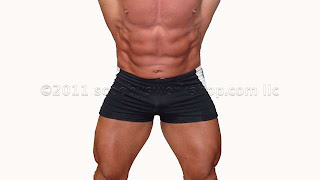Passions run high when it comes to squats and I’m going to help you understand the risks and benefits of doing squats. We’ll start with the benefits of squats but first lets debunk a common myth – squats do not have magical testosterone increasing properties that help you pack on muscle mass. Yes intense resistance training causes a temporary increase in testosterone and growth hormone but that goes for ALL exercises, not just squats.
Squats are a great compound exercise that work the quads, hamstrings, glutes, core while enlisting many smaller stabilizing muscles as well. Its an exercise that only requires an olympic bar and a rack which is available at virtually every gym in the world. If you ask any pro powerlifter or bodybuilder, they will probably list it as the #1 most important exercise.
Many people claim that “There is no substitute for squats” – Mullarky! Maybe for people who dont do any sports outside the gym there is no substitute but for the rest of us active in other sports there is. A safe and effective subsitute for squats is leg press and leg curls and then a game of basketball, soccer, volleyball, rugby, hockey, or lacrosse to work the stabilizing muscles.
For an experienced powerlifter, squats have some risks but for the unskilled, squats can be a 9-1-1 call waiting to happen. Lets talk about the risks, there are knee injuries but most common, and most serious, are the back injuries.
I want to first cover why machines are superior to squats when it comes to back safety. Remember from your high school physics that the sum of the forces in the X,Y, and Z directions must be zero. If you have a 495 pound bar sitting across your shoulders in a squat then the ground must be pushing back up with an equal but opposite 495 pounds of force to keep you from sinking into the floor. Therefore, your spine is under 495 pounds of compression – 495 pounds of force pushing from each end.
Now lets look at a leg press machine. Its set to the same weight so the foot pad is pushing with 495 pounds of force. The difference here is that the opposing 495 pounds of force is being applied at the hips. The sum of the forces again is zero and the legs are under 495 pounds of compressive force just as in the squats. The difference is that the spine here is under no compressive stress at all. Zero pounds on the head is counterbalanced by zero pounds pushing from the seat.
Not everyones back can withstand that immense compressive force from squatting. Good technique and a strong core can lessen the spinal compression somewhat but squats compress the spine – period. Human spines are poorly designed for handling vertical compressive loads, its one of the reasons why 10.2% of the population has debilitating chronic back pain. Our spines are much better designed for being horizontal and on all fours like a horse.
So, should you do squats or not??? Squats ARE a great exercise but they are not for everyone. They are great if you:
• you have been trained by a professional powerlifting coach
• you, your parents, and your grandparents have no history of back problems
• you have either a squat cage with safety catch bars set at hip height or higher
Otherwise, skip the squats and use leg machines and play sports!


